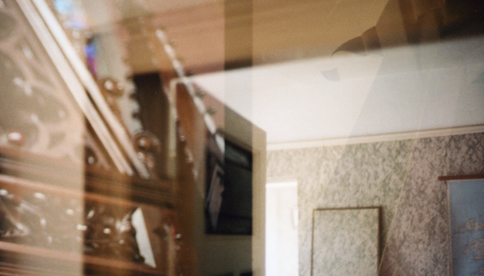Catriona Osborne

There is a polarisation within the Catholic Church’s teachings. Divine and sin. Devotion and hostility. These poles are harmful and restraining as they leave no room for coalescence. This is reflected by depicting inside and outside, drawing on the same simple image. When used repetitively, images take on new forms to investigate the interaction of the conscious and sub-conscious. The images explored are Catholic architectural features, simplified to their most basic form. These canopy windows are used to honour saints pictured in stained glass, what does it mean if these windows are left hollow?
“Let us observe that this nightmare is not visually frightening. The fear does not come from the outside nor is it composed of old memories it has no past, no physiology.”
-Poetics of Space Gaston Bachelard
